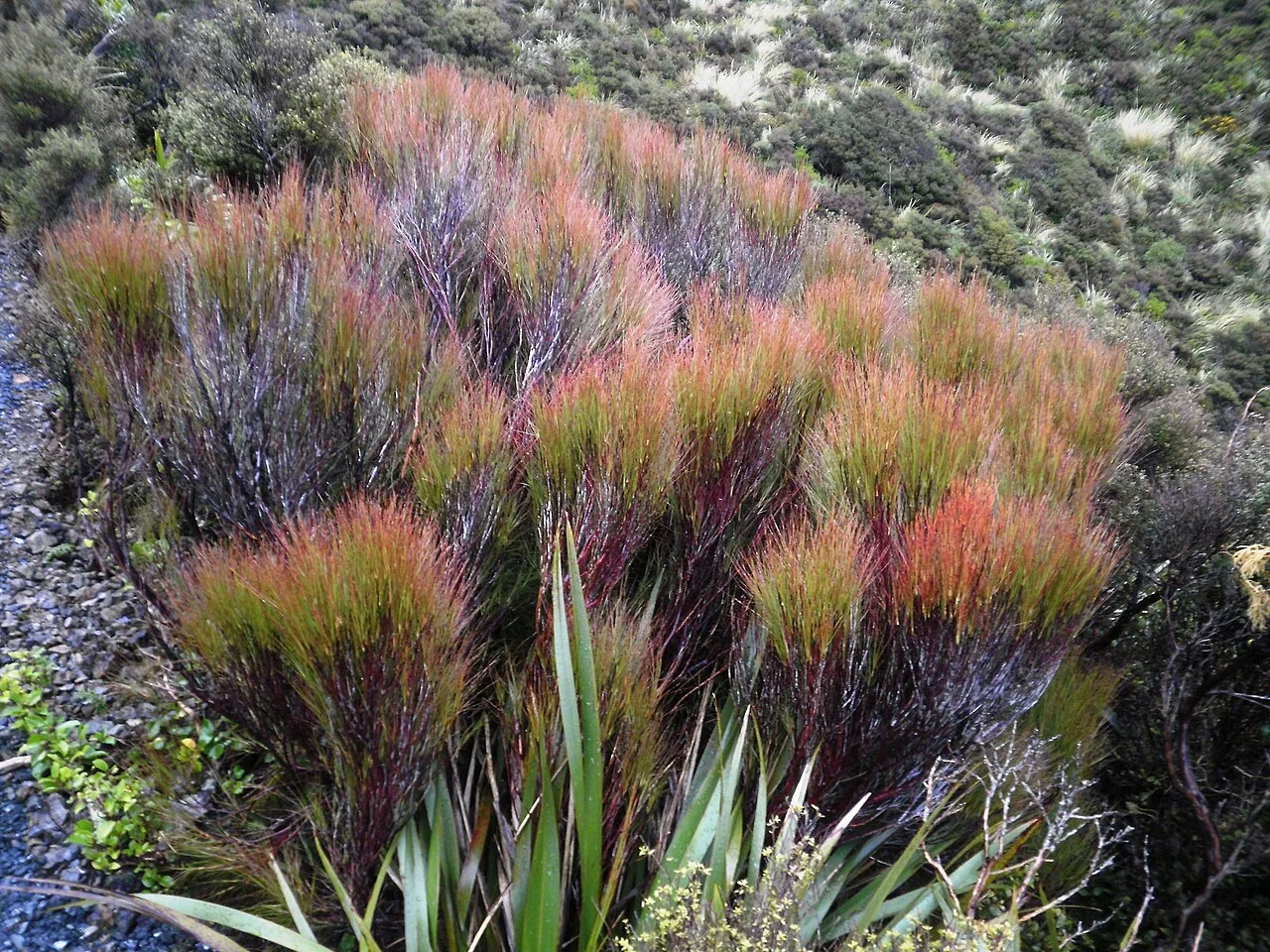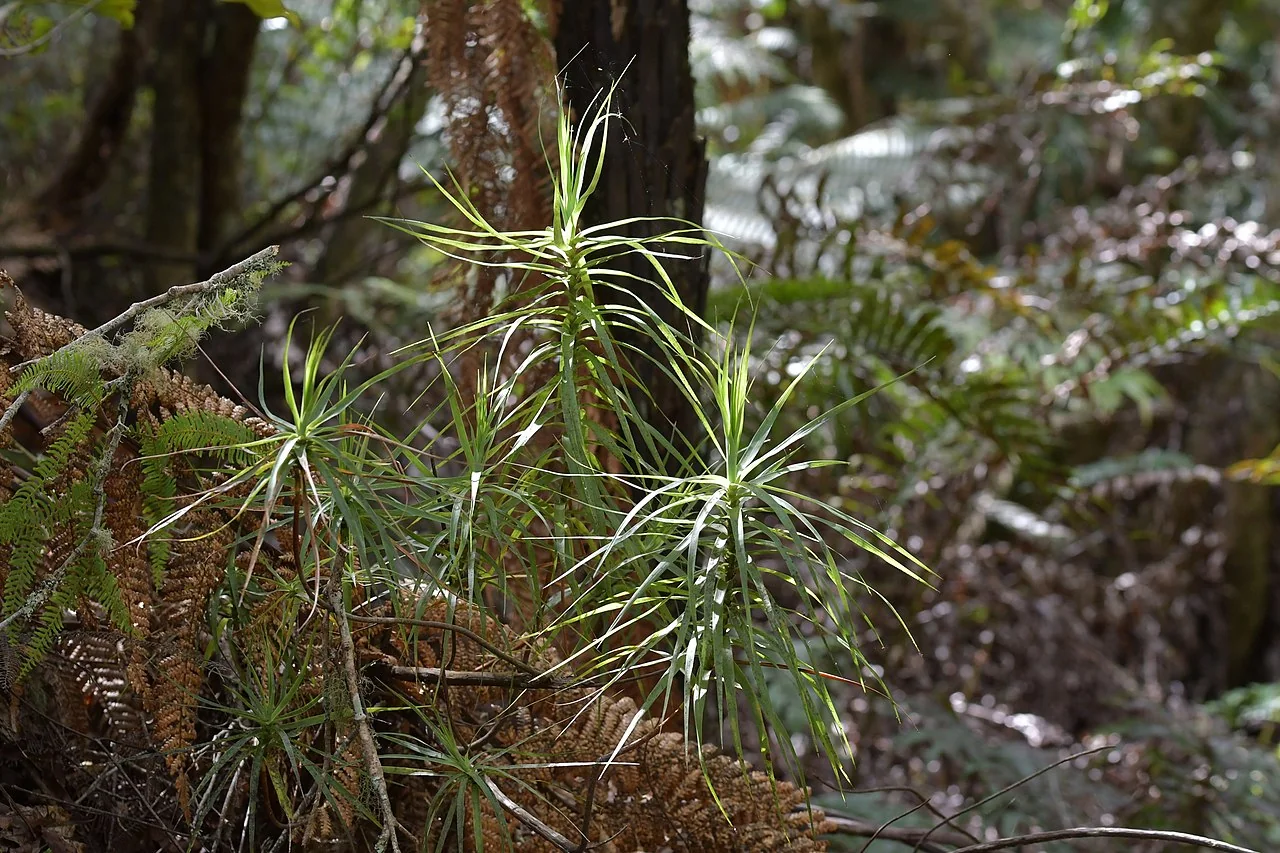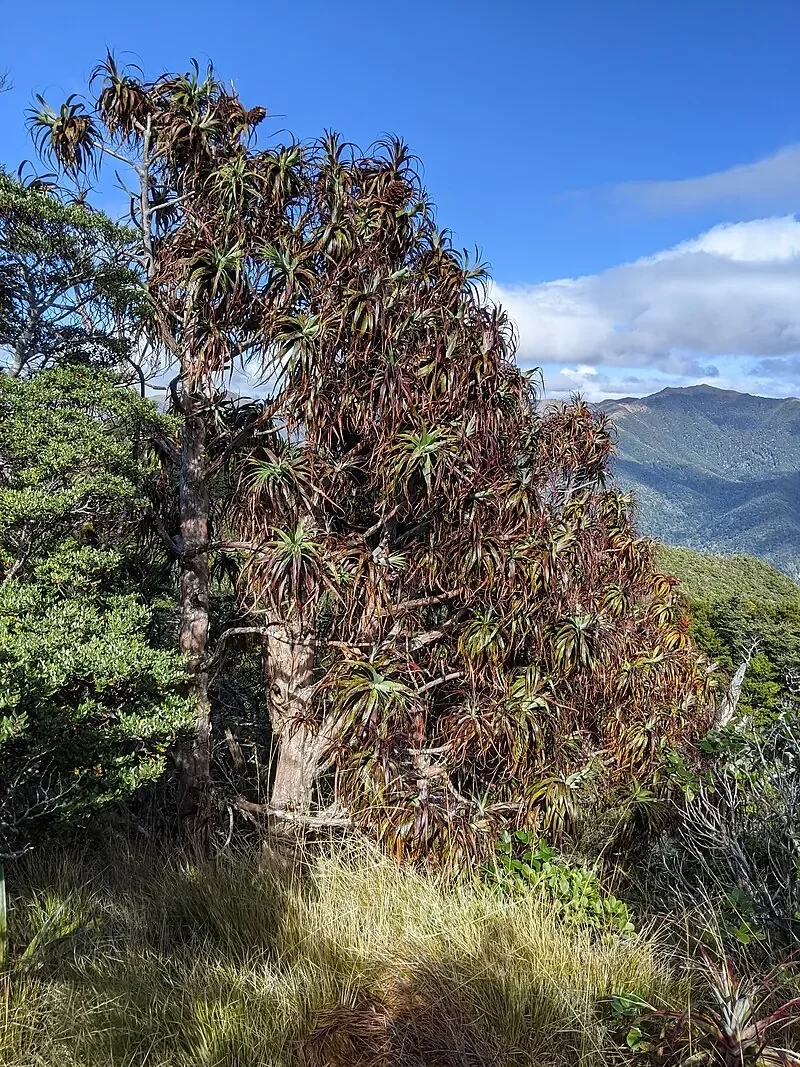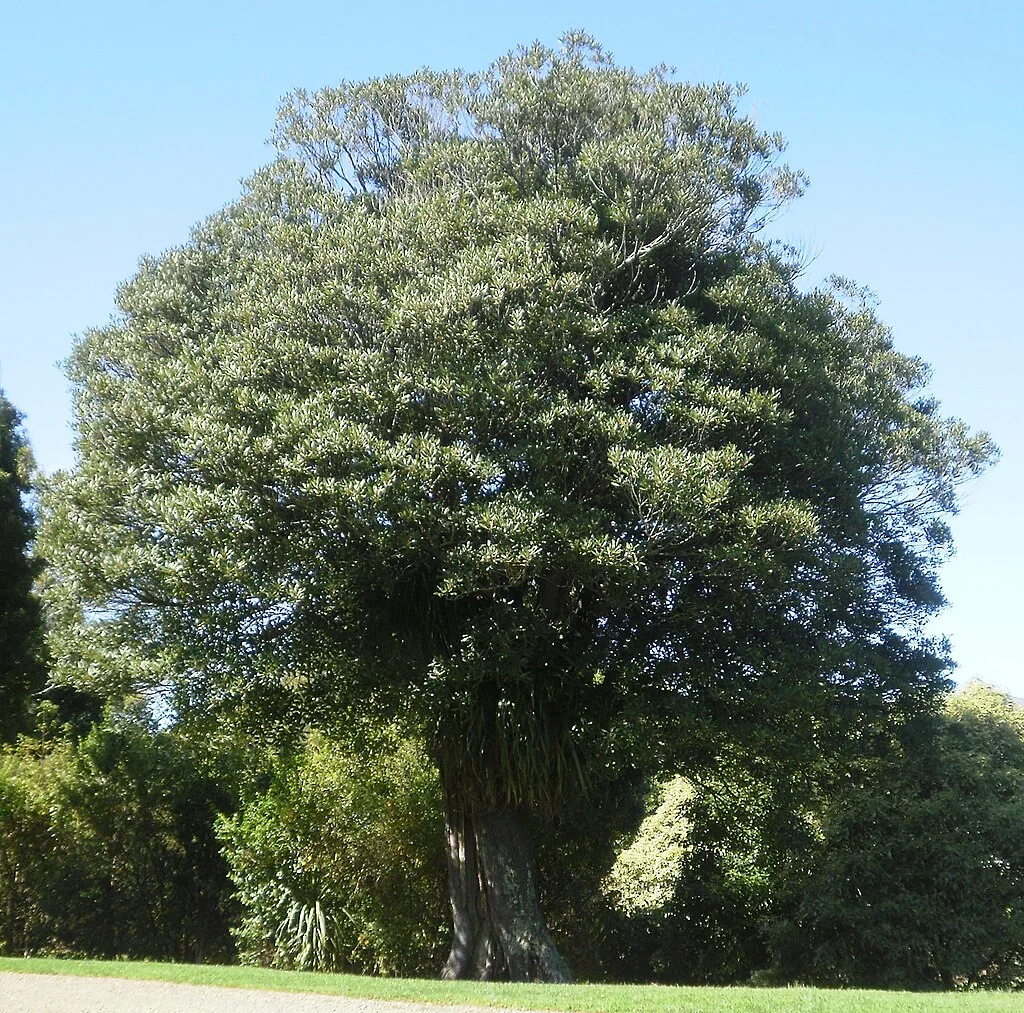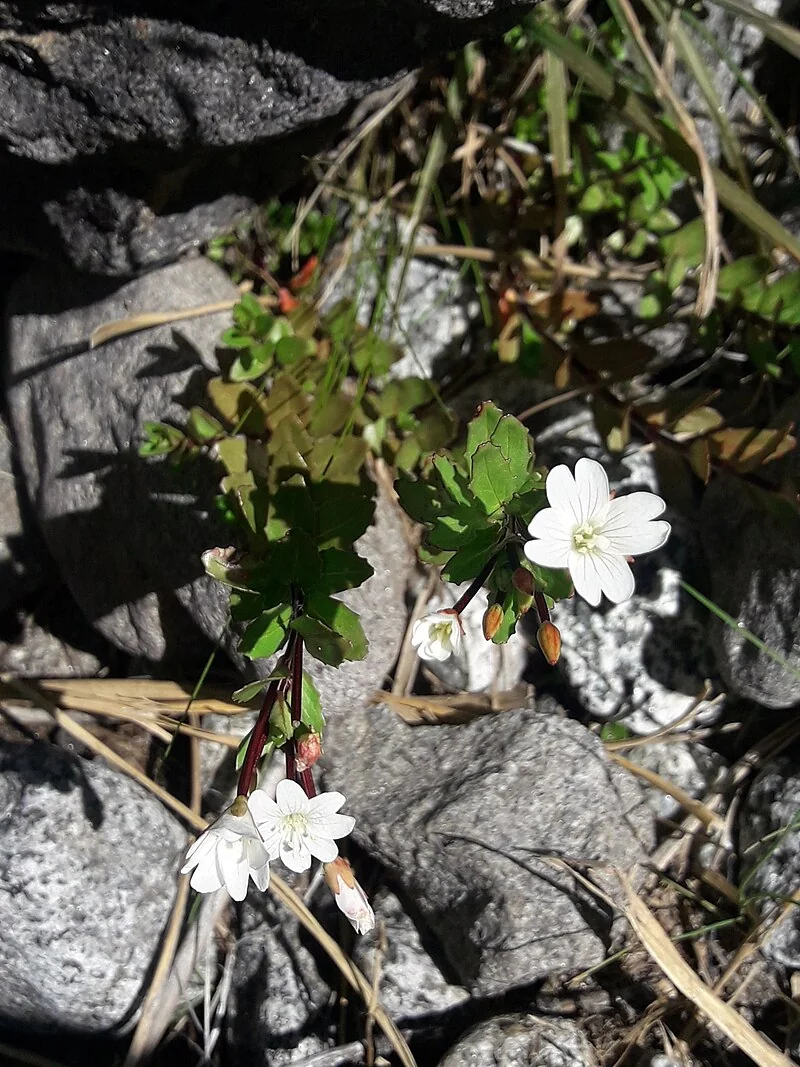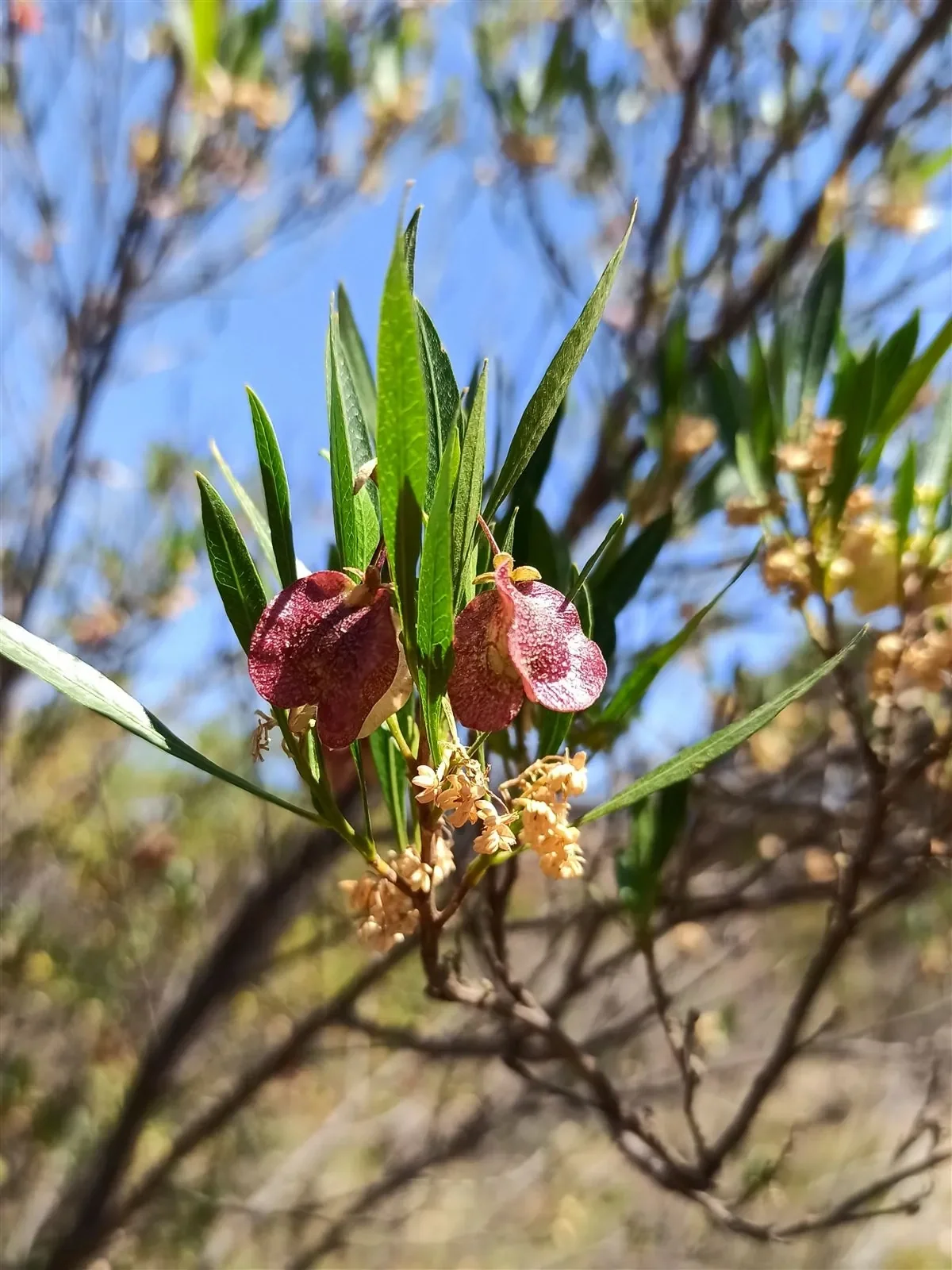
Akeake
Dodonaea viscosa
Introduction
Introduction Overview
Dodonaea viscosa is a hardy shrub or small tree native to New Zealand, known for its resilience in coastal and exposed environments. It is valued for its attractive purple-tinged foliage, tolerance of poor soils, and ability to withstand wind and salt spray. The plant is often used for shelterbelts, hedges, and ecological restoration projects. native trees

Plant Description
Botanical Features
Dodonaea viscosa, commonly known as Akeake or Sticky Hop Bush, is a hardy evergreen shrub or small tree native to New Zealand and widely distributed across tropical, subtropical, and warm temperate regions globally. It typically grows as an erect to spreading shrub, ranging from 1 to 4 meters tall, but can occasionally reach up to 9 meters. Its leaves are leathery, glossy, and characteristically sticky to the touch due to a resinous substance, which helps protect against water loss. The leaves are variable in shape, often spatulate or obovate to lanceolate, and measure between 4-15 cm long and 1-4 cm wide. The inconspicuous green or yellow flowers appear in terminal clusters during spring and summer. A standout feature is the showy, ornamental, papery, winged capsules that develop after flowering. These fruits emerge green, then change color to yellow-green, and finally to brilliant pink or red, ripening to brown. This species is extremely hardy and can be found in a wide range of habitats, including arid regions, rocky areas, and coastal environments, tolerating dry conditions, salt spray, strong winds, and moderate frosts.
Quick Facts
Quick Facts Overview
| Scientific Name | Dodonaea viscosa |
|---|---|
| Height | 2-7 m (occasionally up to 10 m) |
| Spread | 2-4 m |
| Water Needs | Low to moderate; drought tolerant once established |
| Light | Full sun to partial shade |
| Frost Tolerance | Moderate; hardy to about -5°C |
| Salt Tolerance | High; tolerates coastal conditions and salt spray |
| Growth Rate | Fast |
| Lifespan | Long-lived (decades) |
Climate and Conditions
Native Range
Akeake is naturally found in coastal and lowland areas throughout New Zealand, particularly in drier eastern regions. It's a pioneer species that colonizes disturbed sites, rocky areas, and forest margins.
Preferred Conditions
- Sun Exposure: Thrives in full sun but tolerates partial shade.
- Wind Tolerance: Exceptional resistance to strong winds, including salt-laden coastal winds.
- Temperature Range: Hardy to about -5°C. Young plants may need protection in hard frosts.
- Rainfall: Drought tolerant once established, though responds well to occasional deep watering during prolonged dry spells.
Adaptability
Akeake is renowned for its adaptability to challenging sites, making it ideal for coastal gardens, exposed positions, and poor soils. It's particularly valuable in areas where other plants struggle to establish.
| City | Suitability |
|---|---|
| Whangārei | Ideal |
| Auckland | Ideal |
| Hamilton | Ideal |
| Tauranga | Ideal |
| Rotorua | Ideal |
| Gisborne | Ideal |
| New Plymouth | Ideal |
| Napier | Ideal |
| Whanganui | Ideal |
| Palmerston North | Ideal |
| Wellington | Ideal |
| Nelson | Ideal |
| Christchurch | Ideal |
| Dunedin | Ideal |
| Invercargill | Ideal |
Natural Habitat
Natural Habitat Overview
Akeake is naturally found in specific habitats throughout New Zealand. Understanding its natural environment helps in providing appropriate growing conditions in cultivation.
Plant Conservation
Dodonaea viscosa, commonly known as akeake or hopbush, has a complex conservation status that varies significantly depending on the region and specific subspecies. Globally, the species is classified as "Least Concern" by the IUCN (International Union for Conservation of Nature) due to its widespread distribution across tropical, subtropical, and warm temperate areas. In Australia, where the genus is largely endemic, Dodonaea viscosa is generally "Not considered to be at risk in the wild." However, several regional and subspecies-specific conservation concerns exist. For instance, in Victoria, Australia, Dodonaea viscosa subsp. angustifolia is listed as "Rare" and is proposed to be "Vulnerable," facing threats from repeated fires, severe drought, and browsing by herbivores. In Singapore, Dodonaea viscosa is native but considered "Critically Endangered (CR)" locally. In North America, Dodonaea elaeagnoides (which is synonymous with Dodonaea viscosa in some contexts), known as Keys Hopbush, is listed as "Endangered." Conversely, some subspecies, such as Dodonaea viscosa subsp. angustissima in the Mallee region of Australia, can be considered "invasive native scrub," dominating vegetation communities and competing with other native plants.
Growing and Maintenance
General Care
- Watering: Water regularly until established, then only during prolonged drought.
- Feeding: Generally not required, though a light application of slow-release fertilizer in spring can promote vigorous growth.
- Pruning: Responds well to pruning and can be shaped as desired. Prune in late winter or early spring.
Maintenance Level
Low maintenance once established. Occasional pruning to maintain shape and remove any damaged branches is all that's typically required.
Growing Requirements
Planting Guide
Planting Guide Overview
- Choose a sunny, well-drained site
- Dig a hole twice as wide as the root ball
- Mix compost into poor soils if needed
- Plant at the same depth as in the container
- Water thoroughly after planting
- Mulch to retain moisture, keeping away from the trunk
Ecological Role
Dodonaea plays an important ecological role in New Zealand's native ecosystems. It provides habitat and food for native wildlife and contributes to ecosystem health and biodiversity.
Wildlife Habitat
Akeake provides valuable habitat for native birds, insects, and other wildlife. The dense foliage offers shelter and nesting sites, while the seeds are an important food source for various bird species.
Ecosystem Services
The plant contributes to soil stabilization, particularly in coastal and exposed areas, and helps prevent erosion. Its deep root system helps improve soil structure and water infiltration.
Succession and Restoration
As a pioneer species, Akeake plays a crucial role in ecological succession, colonizing disturbed sites and creating conditions suitable for other native plants to establish.
Uses and Significance
Uses and Significance Overview
- Popular for shelterbelts, hedges, and windbreaks in coastal and exposed gardens
- Valued for rapid growth and resilience in poor soils
- Used in ecological restoration and dune stabilization projects
- Provides habitat and shelter for native birds and insects
- Timber traditionally used for tools and implements
Landscaping Uses
Dodonaea is highly valued in landscaping for its aesthetic appeal and practical benefits. It can be used in various garden styles and landscape applications.
Garden Applications
- Windbreaks and shelterbelts
- Hedges and screens
- Coastal gardens
- Native plant gardens
- Restoration projects
- Drought-tolerant landscapes
Design Considerations
Consider the plant's mature size, growth rate, and maintenance requirements when incorporating it into landscape designs. Its adaptability makes it suitable for challenging sites where other plants may struggle.
Seasonal Care
Seasonal Care Overview
- Spring: Prune to shape, apply mulch, and check for new growth
- Summer: Water young plants during prolonged dry periods
- Autumn: Plant new specimens, enjoy colorful seed capsules
- Winter: Protect young plants from severe frost if needed
Pruning
Pruning Techniques
Prune Dodonaea viscosa in late winter or early spring to maintain shape and encourage bushiness. Remove any dead, damaged, or crossing branches. Regular trimming is recommended for hedges and screens.
How to Grow Akeake
Akeake, also known as Hopbush, is a remarkably hardy and versatile native shrub or small tree, highly valued for its resilience in coastal and exposed environments. Its attractive purple-tinged foliage, tolerance of poor soils, and ability to withstand wind and salt spray make it an excellent choice for shelterbelts, hedges, and ecological restoration projects. Understanding its propagation methods is key to successfully growing this adaptable species.
From Seed
Propagating Akeake from seed is a straightforward and reliable method. Collect the distinctive papery seed capsules when they turn reddish-brown, typically in late summer or autumn, but before they open and release their seeds. Allow the capsules to dry in a paper bag to collect the seeds. Sow the fresh seeds in a well-draining seed-raising mix, lightly covering them. Maintain consistent moisture and provide a warm, bright position for germination. Germination typically occurs within 2-4 weeks, but can sometimes be erratic. Once seedlings have developed a few true leaves, they can be potted into individual containers and grown in a sheltered location before planting out into the garden.
From Cuttings
Akeake can also be easily propagated from semi-hardwood cuttings, typically taken in late summer or autumn from healthy, current season's growth. Cuttings should be about 4-6 inches long. Remove the lower leaves and dip the cut end in a rooting hormone for best results. Plant the cuttings into a free-draining propagation mix, such as a blend of perlite and sand. Maintain high humidity around the cuttings, perhaps by placing them under a plastic dome or in a propagator, and ensure consistent moisture in the cutting mix. Rooting usually occurs within 6-8 weeks. Once rooted, the new plants can be potted on and grown in a sheltered environment until they are ready for planting.
Pests and Diseases
Common Pests
- Scale Insects: May occasionally infest stems and leaves. Control with horticultural oil if severe.
- Aphids: Can affect new growth. Usually controlled by natural predators.
Disease Prevention
- Root Rot: Avoid waterlogged soils to prevent root diseases.
- General Health: Ensuring good air circulation helps prevent fungal issues.
Akeake is generally very resistant to pests and diseases, making it a low-maintenance addition to most gardens.
Cultural Significance
Dodonaea viscosa, also known by names such as 'akeake' (Māori), 'aÊ»aliÊ»i' (Hawaiian), and 'sticky hop bush' or 'Native Hops' (Australia), holds significant cultural importance across various regions due to its diverse uses and symbolic meanings.
In New Zealand:
- The Māori people highly valued the exceptionally hard wood of Dodonaea viscosa for crafting weapons like taiaha and patu, as well as garden implements. The name "akeake," meaning "for ever for ever," reflects the plant's resilience and is associated with steadfastness.
In Hawaii:
- The plant, known as ʻaʻaliʻi, was integral to daily life. Its durable hardwood was utilized in canoe building, weapons, agricultural tools, and house construction.
- Fishermen used the wood as bait sticks and for making fishing spears. The seeds were boiled to produce a red dye, and the foliage and seed capsules are still used today for lei-making and wreaths.
- Medicinally, Hawaiians traditionally used ʻaʻaliʻi to treat various skin conditions, including rashes, ringworm, and staph infections.
- Symbolically, the ʻaʻaliʻi represents resilience, as captured in the proverb, "I am a wind-resting ʻaʻaliʻi; no gale can push me over."
Aboriginal Australians:
- Traditionally used Dodonaea viscosa for medicinal purposes, including treating toothaches, cuts, and stingray stings.
- Early European settlers in Australia also found a practical use for its capsules as a substitute for hops in making yeast and beer, leading to its common name "sticky hop bush" or "Native Hops."
Across Other Countries (Nigeria, India, Mexico, Kenya, and Pakistan):
- Dodonaea viscosa has a long history as a traditional folk medicine. It has been used to treat a wide array of ailments such as rheumatism, malaria, colds, fever, indigestion, headaches, toothaches, diarrhea, constipation, dysmenorrhea, ulcers, skin infections (like dermatitis and ringworm), sprains, bruises, burns, wounds, gout, snake bites, and various pains of hepatic or splenic origin.
- Specific applications include applying leaves to burns and scalds, using water boiled with leaves for fomenting swellings and backaches, and for steam inhalation to relieve coughs and colds. The smoke from the plant was also believed to provide pain relief.
Bonus Tip
A Hoppy Surprise
The common name 'Hop Bush' comes from the use of its papery seed capsules as a substitute for hops in beer brewing by early European settlers in New Zealand and Australia. The capsules imparted a bitter flavour to the beer, similar to that of hops.

